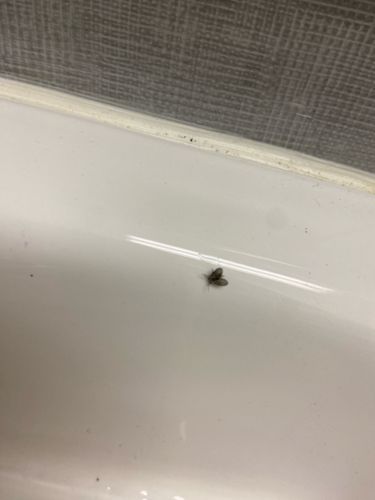Drain Fly
Scientific Name: Psychodidae (subfamily Psychodinae)
Order & Family: Diptera (True Flies), Psychodidae (Moth Flies or Drain Flies)
Size: Typically 2 to 5 mm (0.08 to 0.2 inches) in length.

Natural Habitat
Drain flies are typically found in moist environments where organic decaying matter accumulates. This includes drains (hence the name), sewers, septic tanks, compost piles, and wet areas like leaky pipes or stagnant water in bathrooms and kitchens.
Diet & Feeding
Larvae of drain flies feed on decaying organic matter, fungi, algae, and microorganisms found in the slime layers of drains and other moist, dark places. Adult drain flies generally do not feed significantly or feed on nectar.
Behavior Patterns
Adult drain flies are often seen resting on walls or near drains. They are poor flyers and tend to make short, erratic flights. They are most active at night. Their life cycle typically involves eggs, larvae, pupae, and adults, with the entire cycle taking 1-3 weeks depending on conditions. The larvae live in the gelatinous film found in drains.
Risks & Benefits
Potential risks include being a nuisance, especially in large numbers. While they don't bite or transmit diseases in the way mosquitoes do, they can carry bacteria and other pathogens from their breeding sites to surfaces. A large infestation can indicate a significant build-up of organic matter in plumbing, which can lead to odors or blockages. There are no known significant benefits to humans, though they play a minor role in decomposition in their natural habitats.
Identified on: 9/18/2025